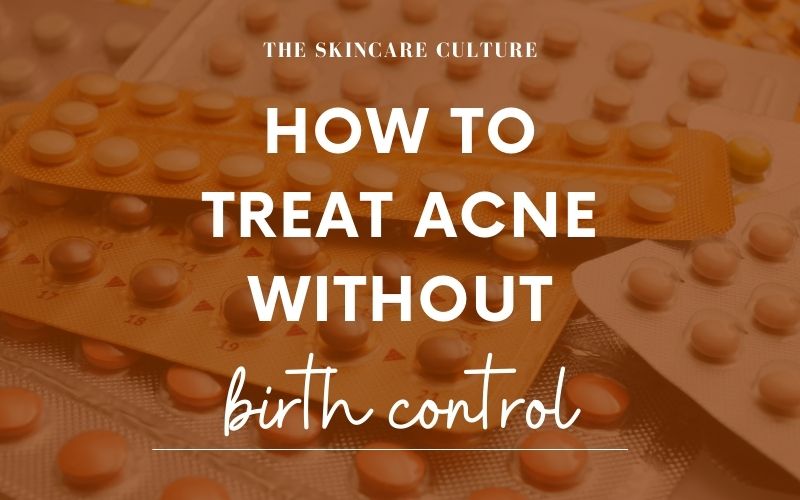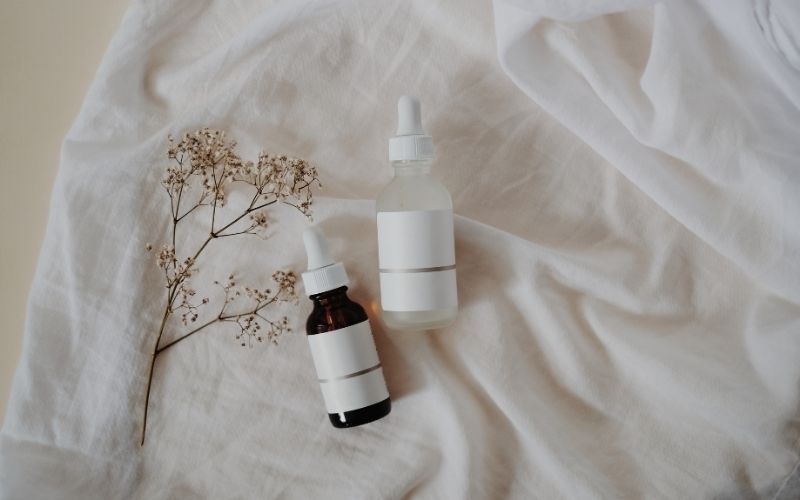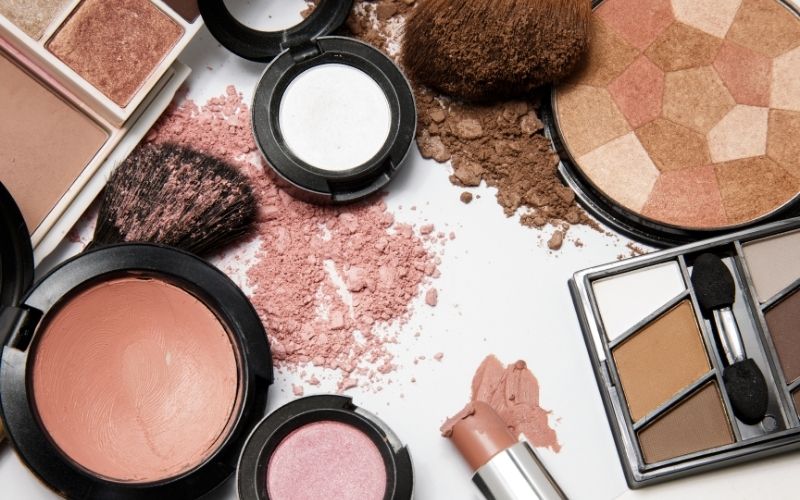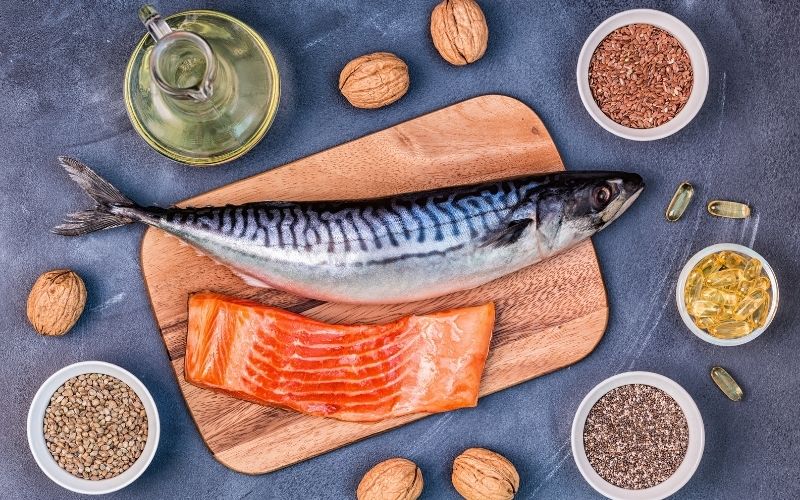Birth control is often prescribed as a treatment for acne as it helps balance out the hormones and bring their overactivity down to normal.
However, birth control comes with quite a few side effects that vary from woman to woman.
Some women don’t experience them at all, but others experience things such as bloating, mood swings, appetite loss or increase, etc.
Besides that, birth control isn’t guaranteed to work, and in some cases (as was the case with me), they make the acne issue even worse.
Luckily, there are many more useful ways to treat hormonal acne without birth control, and in this article, I will be explaining…
10 Ways To Treat Hormonal Acne (Without Birth Control)
- Focus On a Simple Skincare Routine
- Choose Your Actives Carefully
- Check Your Makeup Products
- Swap Coffee For Tea
- Minimize Processed Sugar
- Be Mindful About Dairy
- Get Good Bacteria
- Introduce Omega-3 Into Your Diet
- Look Into Chemical Peels
- See Your Dermatologist

Focus On a Simple Skincare Routine

Having a short and simple skincare routine that consists of products that work for your particular skin concerns is the best way to maintain skin health and not overwhelm your skin with a number of different ingredients that may not agree with each other very well.
Exposing your skin to different ingredients can and most probably will become problematic and can potentially irritate it and trigger more inflammation.
Your skincare routine should consist of no more than 4-5 products that work for your skin and don’t overwhelm it.
Cutting down from a 12 to a 4-step skincare routine was the best thing I did to heal my cystic acne, so make sure to download my free guide that reveals the four products you need for clear skin.
Choose Your Actives Carefully
When you are bringing your skincare routine down to being as minimalistic as possible, you will probably get a little confused as to which actives you should stick to and which ones you should ditch.
Actives are ingredients inside a product that are responsible for the bioactivity of the product.
In products for acne-prone skin, commonly found actives are salicylic acid, benzoyl peroxide, niacinamide, and some form of vitamin A derivatives such as retinoic acid.
When dealing with acne, it’s good to have at least one active on your side; however, more than one or two actives can cause irritations and sensitivity, so it is important not to go overboard with them.
Salicylic acid is a good active for mild to moderate acne, benzoyl peroxide is a good active for more stubborn moderate to severe acne, and prescription-strength retinoid such as tretinoin or over-the-counter adapalene is a good active for very severe acne.
RELATED: Best Skincare Products For Oily & Acne-Prone Skin
Check Your Makeup Products

I can assure you that there are plenty of people out there who have never seen a doctor to confirm their suspicions but think their acne is hormonal just because a pimple looks big, has a dark purplish color, and it’s sitting somewhere along the jawline.
This isn’t always the case, and although you may think your acne is hormonal and there’s something wrong with you internally, eliminating all potential external triggers is always a good idea, and it may possibly yield some positive results.
As I already mentioned above, a single pimple is caused by a clog, and this clog may very well happen because of primers, foundations, concealers, and even powders.
You may be removing your makeup before going to bed, but if that makeup has been on your face for 7-8 hours throughout the day – it could potentially be clogging your pores and causing these angry cysts that may appear “hormonal,” but in reality, they are just a result of your immune’s system aggressive reaction to a clog.
So take some time to line up your makeup products and carefully scan them for any potentially clogging ingredients.
If you suspect a product or multiple products are causing you to break out – the easiest way to find out is to stop using these products for 2-4 weeks.
If your condition improves because you eliminated a potential trigger – you will know what could be causing the issue.
Swap Coffee For Tea
Coffee is delicious, and it helps us wake up in the morning and stay alert throughout a full day of tasks and chores.
However, the problem with coffee is that it’s poisoning the body, and the body then secretes the hormone adrenaline as a stress reaction, which gives us a false sense of energy.
Adrenaline is a stress hormone that can influence your skin’s oil production, and we already know that excess oil clogs the pores and causes acne.
Now, thinking that coffee is literally going to kill us because it’s poisoning the body is a bit dramatic; therefore, instead of cutting it off completely – you can minimize your coffee intake by having one or two coffees in the morning and swapping the rest with tea.
Green tea is wildly praised for its antioxidant content that revitalizes the body but also nourishes the skin.
Therefore, since coffee has something to do with triggering a hormone that causes stress to the system and you happen to be an avid coffee drinker that deals with hormonal acne – this may be the time to experiment and figure out whether coffee may be the trigger behind your skin issues.
RELATED: How I Healed my Cystic Acne in 5 Days
Minimize Processed Sugar

One study found that after ten weeks of eating a diet that balances blood sugar, patients not only saw improvements in their acne, but their sebum-producing glands also shrunk.
Another study found that eating a blood-sugar-balancing diet changed patients’ sebum composition and reduced their number of pimples.
Why this may be, you ask? Let’s take a quick look at another hormone that could have something to do with this: insulin.
Every time you eat, your pancreas releases insulin. This helps to get the sugar (glucose) out of your bloodstream and into your cells so that they have the energy to carry out their important functions.
Insulin is essential – but we can run into problems when too much is released too often. Excess insulin increases the production of androgens, a group of hormones that includes testosterone.
When testosterone from the blood comes over to the skin, it gets converted to a much more potent form, called dihydrotestosterone (DHT).
DHT then kicks your sebaceous glands into overdrive and causes them to produce excess oil, which leads to excessively oily skin and clogged pores.
It also triggers the hyperkeratinization process, also known as abnormal shedding of the skin cells.
However, the problem with hyperkeratinization is that sometimes the dead skin cells that are supposed to shed stay stuck inside the pores, further contributing to clogging and acne.
Therefore, minimizing processed sugar from your diet may be a great way to determine whether this has something to do with your skin issues.
RELATED: Does Chocolate Cause Acne?
Be Mindful About Dairy
There is a possibility that dairy can cause acne for some people. Here are some potential explanations:
- Casein sensitivity. If you’re sensitive to A1 beta-casein, a protein in cow’s dairy, it can cause an inflammatory reaction that shows up on your complexion. These are the people who have dramatic results when they cut out cow’s dairy. They also find that eating some goat’s and/or sheep’s dairy is fine because these contain a different form of beta-casein.
- Whey sensitivity. This is another type of protein found in cow’s milk. Like casein, it can cause problems in some people. It also increases insulin. Together, these contribute to the ‘bodybuilder acne’ that can develop when people eat lots of whey-based protein powder.
- Hormonal interplay. This is how dairy affects the rest of us. You’ve likely heard that milk contains hormones -and the theory is that these hormones mess with your hormones and give you breakouts. But the interplay between acne and dairy is far more complex than this.
Dairy does contain some hormones, but its impact on acne likely stems from the messages it’s giving our bodies.
Studies show that drinking milk causes our liver to create more of a hormone called insulin-like growth factor-1 (or IGF-1 for short).
As the name suggests, IGF-1 gives cells in the body the message that it’s time to start growth processes. Milk programs offspring to grow. Cow’s milk specifically is designed to help a calf double its birth weight in 40 days.
It may be that these growth signals are too much for an adult human. When a person no longer needs to grow, the signals start misfiring – instructing skin cells to multiply too quickly, and causing sebaceous glands to produce too much oil.
Together, these block pores and lead to pimples.
The research of the connection between dairy and acne is far from conclusive; however, many people see dramatic results even after only a week of cutting out dairy from their diet.
It may be worth a try for you, too.
Get Good Bacteria
The gut can influence skin health through what is referred to as the gut-skin axis.
Therefore, an imbalance between the beneficial and harmful bacteria in the gut is frequently connected with inflammatory skin conditions such as acne and eczema.
Beneficial gut bacteria known as probiotics inhibit the growth of harmful bacteria or pathogens and strengthen the gut lining.
But when overgrowths of pathogens damage the gut wall, the contents of the gut leak through this abnormally permeable lining and can stimulate an immune cell response, triggering inflammation in the body, which may contribute to the development of acne.
Bacterial by-products can also pass through these gaps in the gut wall lining, through the bloodstream to the skin, where they can dry and harden the skin.
Supplementing your body with good bacteria or probiotics can help reduce inflammation and oxidative stress, rebalance gut dysbiosis, maintain the integrity of the gut barrier, promote gut health, regulate bowel movements, and manage the effects of stress, etc.
The two best probiotics for gut health are Lactobacillus acidophilus and Bifidobacterium lactis. These are found in kombucha, cottage cheese, kefir, sauerkraut, miso, tempeh, yogurt, etc.
Introduce Omega-3 Into Your Diet

Omega-3 is a family of essential fatty acids that play important roles in your body and provide a number of health benefits but also prevent potential ailments such as inflammation in the body.
Your body cannot produce omega-3 on its own; therefore, you must get them from your diet.
The three most important types are ALA (alpha-linolenic acid), DHA (docosahexaenoic acid), and EPA (eicosapentaenoic acid). ALA is mainly found in plants, while DHA and EPA occur mostly in animal foods and algae.
Emerging studies also hint that omega-3 can be used as a treatment to improve acne.
A controlled study was performed where 45 participants with mild to moderate acne were allocated to either an omega-3 fatty acid group, a γ-linoleic acid group (borage oil containing 400 mg γ-linoleic acid), or a control group.
After 10 weeks, participants showed a reduction in both the severity and number of acne lesions with zero adverse effects reported.
Common foods high in omega-3 fatty acids include fatty fish such as salmon, tuna, and mackerel, fish oils, flax seeds, chia seeds, flaxseed oil, and walnuts.
RELATED: 10 Things That Completely Changed My Skin
Look Into Chemical Peels
Chemical peels or chemo exfoliation is a professional procedure that involves applying a blend of hydroxy acids to clear out the pores from the gunk that’s causing acne breakouts and help soothe redness and inflammation.
Chemical peels vary in strength and depth; therefore, it’s not a treatment that should be done too frequently or at all times of the year.
Due to their strength and risk of leaving the skin sensitive and reactive for a certain period of time after the procedure – winter is the best time to do these treatments.
Usually, even the most stubborn acne clears out after 3-4 sessions. You should visit your esthetician and talk to them about things such as your skin concerns and expectations from visiting them, your budget, lifestyle, diet, etc.
We estheticians love it when our clients are upfront and honest with us, as this is how we are able to help them best. Don’t be shy to ask your esthetician about whatever may concern you before and after having a treatment.
RELATED: How To Save Money And Get Clear Skin?
See Your Dermatologist
People with severe acne often make the issue even worse by delaying their visit to the dermatologist for one or another reason.
A dermatologist can help determine your skin condition and create a tailored treatment for your specific needs.
You should be open and discuss your health concerns with your dermatologist, and if you don’t want to take birth control pills, you should be upfront about it.
There are plenty of other treatments such as oral antibiotics and prescription-strength topical products your derm can prescribe to help clear out the issue in the shortest amount of time.
Allowing acne to become more and more severe while delaying a doctor’s visit will lead to permanent and visible scarring that usually takes a few sessions of expensive laser and painful microneedling treatments to clear.

My name is Simone and I am a certified skin specialist. I created this website to teach my readers how to take great care of their skin and I also like to occasionally share my honest opinions on skincare products I’ve tried. You can learn more about me here.
